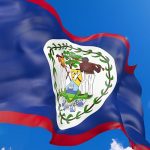
International Women’s Day
International Women’s Day is a holiday celebrated worldwide on March 8th that honors the cultural, economic, and political achievements of women. It also acknowledges women’s social accomplishments. However, the purpose of this holiday extends beyond celebration; it aims to raise awareness about the significance of women’s equality, accelerate gender parity between men and women, and raise funds for charities addressing women’s issues.
Each year, a theme is selected for the holiday. Past themes have included “Time is Now: Rural and urban activists transforming women’s lives” in 2018, “Think Equal, Build Smart, Innovate for Change” in 2019, “I am Generation Equality: Realizing Women’s Rights” in 2020, and “Women in leadership: Achieving an equal future in a COVID-19 world” in 2021.
International Women’s Day History
The origins of International Women’s Day can be traced back to the early 20th century, a period marked by rapid urbanization and industrialization that brought significant changes and challenges. During this time, the world’s population surged, and radical ideologies emerged.
Women’s inequality and oppression contributed to the unrest and political debate. As more women became vocal and politically active, they began to campaign for change. In 1908, approximately 15,000 women marched through the streets of New York City, demanding shorter hours, better wages, and, crucially, voting rights.
In 1910, the Second International Conference of Working Women in Copenhagen, Denmark, saw the proposal of International Women’s Day by Clara Zetkin, leader of the “Women’s Office” for the Social Democratic Party in Germany. Over 100 women from 17 countries attended, representing unions, political parties, and working women’s clubs.
The first International Women’s Day was observed on March 19, 1911, in Austria, Denmark, Switzerland, and Germany. Over a million men and women attended rallies campaigning for women’s rights to vote, work, vocational training, public office, and an end to discrimination.
The “Triangle Fire” in New York City on March 25, 1911, which claimed over 140 working women’s lives, underscored the need for improved working conditions and led to significant labor legislation in the U.S.
The Bread & Roses campaign of 1911, inspired by a speech by Helen Todd and a poem by James Oppenheim, became a rallying cry for women’s rights throughout the 20th and 21st centuries.
Russian women celebrated their first International Women’s Day on February 23, 1913. Subsequent discussions led to the standardization of March 8 as the annual celebration date worldwide. In 1917, Russian women’s protests for “bread & peace” in response to the war led to the Czar’s abdication and the provisional government granting them voting rights.
Although International Women’s Day was celebrated from 1911 onwards, it was not until 1975 that the United Nations officially recognized the holiday. In December 1977, the UN General Assembly adopted a resolution proclaiming a UN Day for Women’s Rights & International Peace, to be observed on any day of the year according to national or historical traditions.
It took until 1996 for the United Nations to introduce themes to their annual celebration, starting with “Celebrating the Past, Planning for the Future.”
By 2000, feminism faced opposition from certain political factions, prompting activists to revitalize the movement. In 2001, the website internationalwomensday.com was launched to promote women’s rights and support women-specific charities. In 2011, U.S. President Barack Obama declared March “Women’s History Month.”
The struggle for women’s rights and equality persists, with activists continuing to push for change. International Women’s Day remains a crucial part of this effort, offering a moment to reflect on the movement’s history and campaign for progress.
Official UN Themes For International Women’s Day 1996-2021
Below is a compilation of the UN themes for International Women’s Day from 1996 to 2021:
- 1996: Celebrating the Past, Planning for the Future
- 1997: Women at the Peace Table
- 1998: Women and Human Rights
- 1999: World Free of Violence Against Women
- 2000: Women Uniting for Peace
- 2001: Women and Peace: Women Managing Conflicts
- 2002: Afghan Women Today: Realities and Opportunities
- 2003: Gender Equality and the Millennium Development Goals
- 2004: Women and HIV/AIDS
- 2005: Gender Equality Beyond 2005; Building a More Secure Future
- 2006: Women in Decision-making
- 2007: Ending Impunity for Violence Against Women and Girls
- 2008: Investing in Women and Girls
- 2009: Women and Men United to End Violence Against Women and Girls
- 2010: Equal Rights, Equal Opportunities: Progress for All
- 2011: Equal Access to Education, Training, and Science and Technology: Pathway to Decent Work for Women
- 2012: Empower Rural Women, End Poverty and Hunger
- 2013: A Promise is a Promise: Time for Action to End Violence Against Women
- 2014: Equality for Women is Progress for All
- 2015: Empowering Women, Empowering Humanity: Picture it!
- 2016: Planet 50–50 by 2030: Step It Up for Gender Equality
- 2017: Women in the Changing World of Work: Planet 50-50 by 2030
- 2018: Time is Now: Rural and urban activists transforming women’s lives
- 2019: Think Equal, Build Smart, Innovate for Change
- 2020: I am Generation Equality: Realizing Women’s Rights
- 2021: Women in leadership: Achieving an equal future in a COVID-19 world
A Short List Of Some Of The Women Who Shaped Feminism
While it is impossible to list all the influential feminists, here are some who have significantly shaped the movement:
- Mary Wollstonecraft
- Susan B. Anthony
- Alice Stone Blackwell
- Elizabeth Cady Stanton
- Emmeline Pankhurst
- Sojourner Truth
- Simone de Beauvoir
- Eleanor Roosevelt
- Betty Friedan
- Gloria Steinem
- Angela Davis
- bell hooks
- Barbara Walters
- Coretta Scott King
- Maya Angelou
- Audre Lorde
- Ruth Bader Ginsburg
- Alice Walker
- Hillary Clinton
- Michelle Obama
- Oprah Winfrey
- Malala Yousafzai
- Chimamanda Ngozi Adichie
- Beyoncé
- Roxane Gay
- Janet Mock
- Patrisse Cullors
- Tarana Burke
- Meghan Markle
- Alexandria Ocasio-Cortez
- Naomi Klein
- Kathleen Neal Cleaver
- Winona LaDuke
- Laverne Cox
International Women’s Day is an excellent opportunity to learn more about these and other individuals advancing the cause of feminism.
Observing International Women’s Day
To celebrate this holiday, individuals can get involved in the women’s rights movement, attend or organize events, participate in political advocacy, or educate themselves on the history of women’s rights. In some countries, it is customary for men to give women small gifts and flowers. The day is celebrated in various ways worldwide, with each country adding its unique touch.
People can use the hashtag #InternationalWomensDay on social media to spread awareness, and since the day is part of National Women’s History Month, the hashtag #NationalWomensHistoryMonth can also be used. By sharing information about this holiday, individuals can contribute to the progress of the women’s movement.








